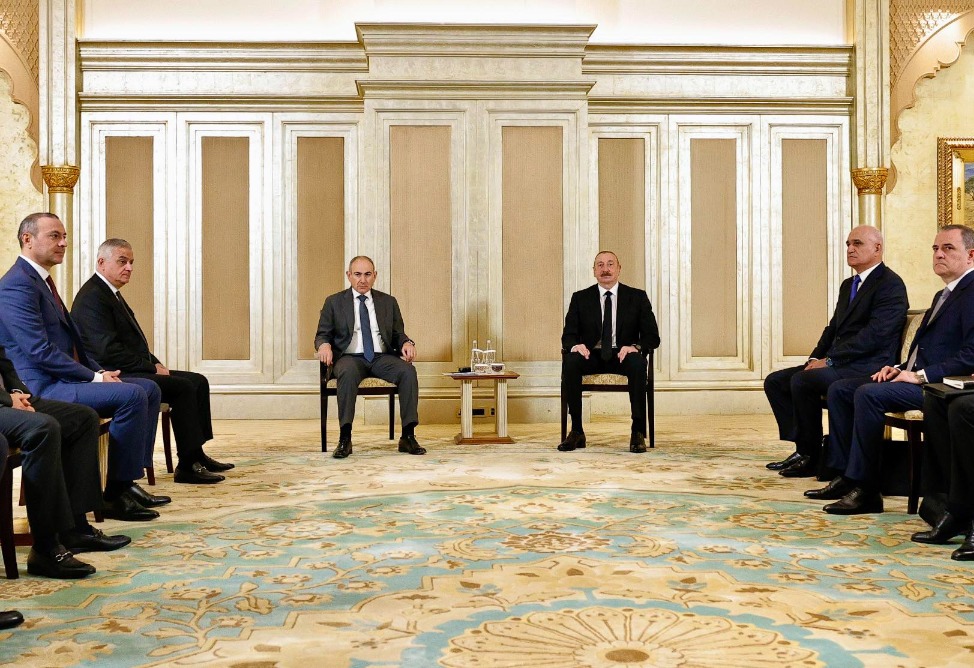OSCE Minsk Group Satisfied with Frozen State of Nagorno-Karabakh Conflict
02.10.2010,
04:05
Nikolai Zlobin, the director of the Russia and Eurasia Project at the World Security Institute, said today in Yerevan that the OSCE Minsk Group is quite satisfied with the frozen state of the Nagorno-Karabakh conflict.
YEREVAN, October 1, /ARKA/. Nikolai Zlobin, the director of the Russia and Eurasia Project at the World Security Institute, said today in Yerevan that the OSCE Minsk Group is quite satisfied with the frozen state of the Nagorno-Karabakh conflict.
The Minsk Group has a mandate of the OSCE to help Armenia and Azerbaijan find a mutually acceptable peace formula to end their dispute over Nagorno-Karabakh.
Speaking at a news conference Zlobin said the cochairmen are very well aware of their inability to resolve the conflict. “Therefore they are satisfied with its frozen condition and will keep it unless they find a solution meeting their personal interests, unless they have an understanding of how it could be solved,’ he said. He argued that the maximum the OSCE Minsk Group can do now is to fend off efforts to defreeze the conflcit.
Nikolay Zlobin is a leading expert on international security; terrorism; relations between the United States and Russia, as well as the United States and the nations of the former Soviet Union; and the politics and history of Russia, Asia and Eurasia.
The conflict in Nagorno-Karabakh broke out in 1988 after the predominantly Armenian-populated enclave declared about secession from Azerbaijan As Azerbaijan declared its independence from the Soviet Union and removed the powers held by the enclave's government, the Armenian majority voted in 1991, December 10, to secede from Azerbaijan and in the process proclaimed the enclave the Republic of Nagorno-Karabakh.
Full-scale fighting, initiated by Azerbaijan, erupted in the late winter of 1992. International mediation by several groups including Europe's OSCE’s failed to bring an end resolution that both sides could work with. In the spring of 1993, Armenian forces captured regions outside the enclave itself. By the end of the war in 1994, the Armenians were in full control of most of the enclave and also held and currently control seven regions beyond the administrative borders of Nagorno-Karabakh.
Almost 1 million people on both sides have been displaced as a result of the conflict. A Russian- -brokered ceasefire was signed in May 1994 and peace talks, mediated by the OSCE Minsk Group, have been held ever since by Armenia and Azerbaijan. –0--
The Minsk Group has a mandate of the OSCE to help Armenia and Azerbaijan find a mutually acceptable peace formula to end their dispute over Nagorno-Karabakh.
Speaking at a news conference Zlobin said the cochairmen are very well aware of their inability to resolve the conflict. “Therefore they are satisfied with its frozen condition and will keep it unless they find a solution meeting their personal interests, unless they have an understanding of how it could be solved,’ he said. He argued that the maximum the OSCE Minsk Group can do now is to fend off efforts to defreeze the conflcit.
Nikolay Zlobin is a leading expert on international security; terrorism; relations between the United States and Russia, as well as the United States and the nations of the former Soviet Union; and the politics and history of Russia, Asia and Eurasia.
The conflict in Nagorno-Karabakh broke out in 1988 after the predominantly Armenian-populated enclave declared about secession from Azerbaijan As Azerbaijan declared its independence from the Soviet Union and removed the powers held by the enclave's government, the Armenian majority voted in 1991, December 10, to secede from Azerbaijan and in the process proclaimed the enclave the Republic of Nagorno-Karabakh.
Full-scale fighting, initiated by Azerbaijan, erupted in the late winter of 1992. International mediation by several groups including Europe's OSCE’s failed to bring an end resolution that both sides could work with. In the spring of 1993, Armenian forces captured regions outside the enclave itself. By the end of the war in 1994, the Armenians were in full control of most of the enclave and also held and currently control seven regions beyond the administrative borders of Nagorno-Karabakh.
Almost 1 million people on both sides have been displaced as a result of the conflict. A Russian- -brokered ceasefire was signed in May 1994 and peace talks, mediated by the OSCE Minsk Group, have been held ever since by Armenia and Azerbaijan. –0--



